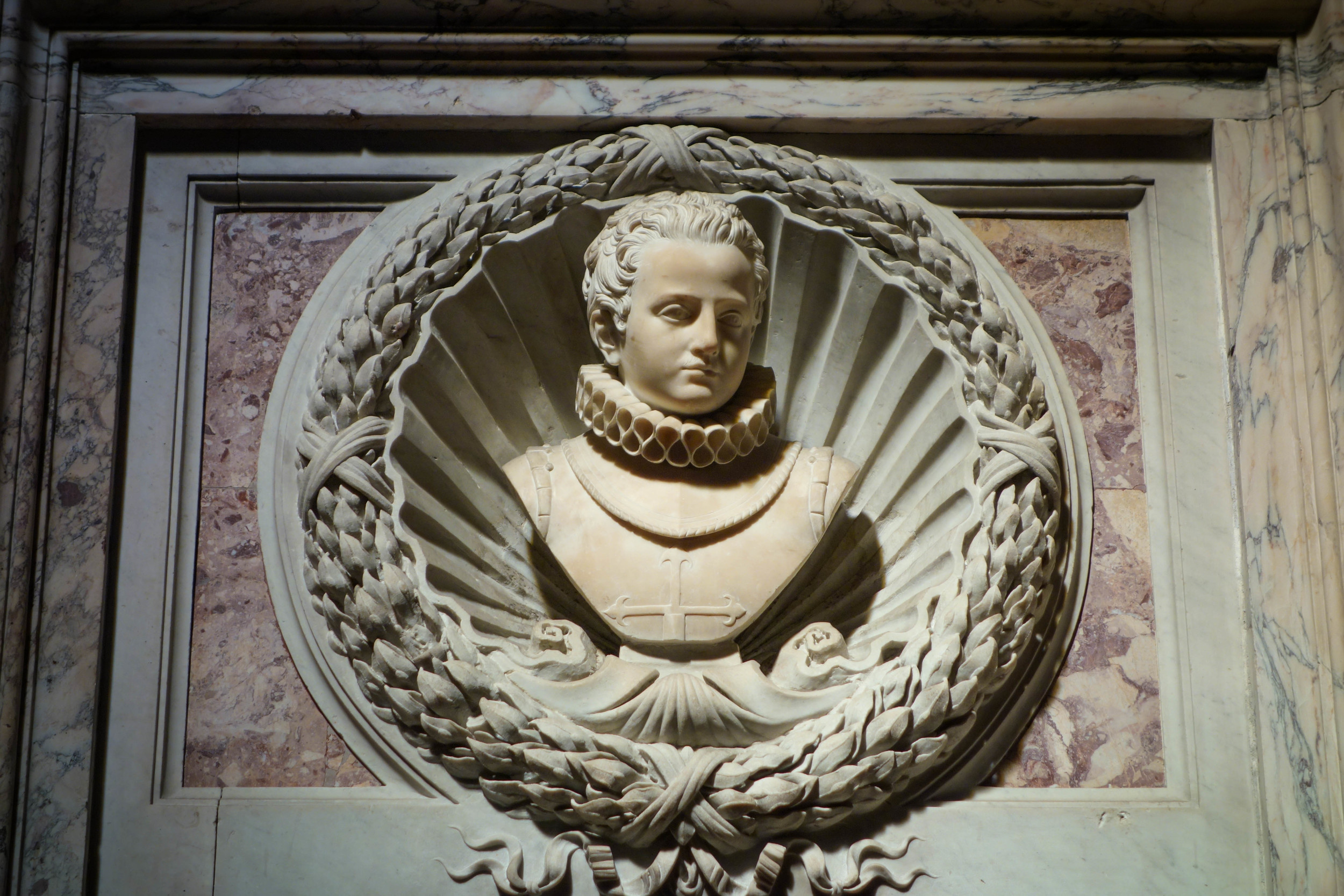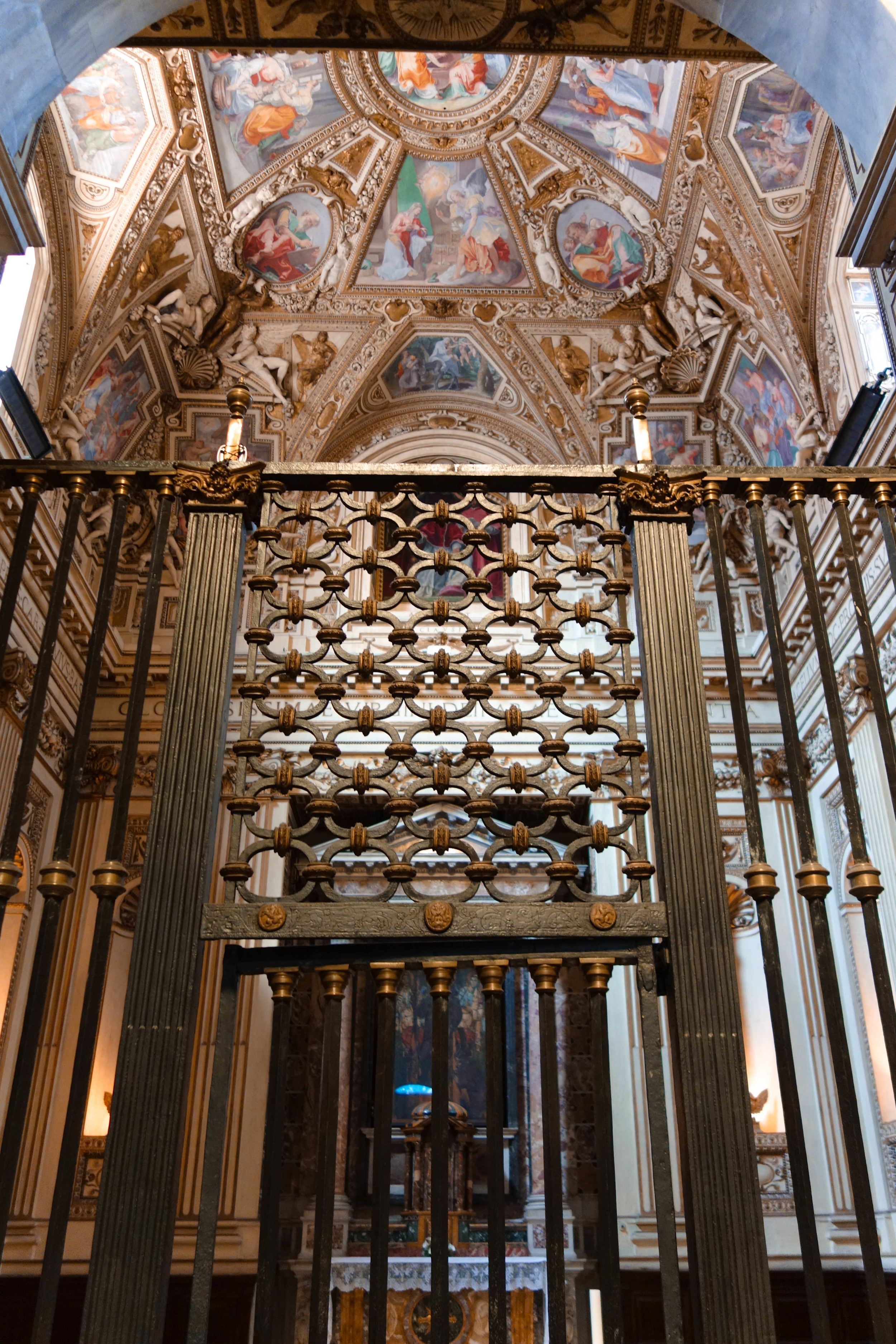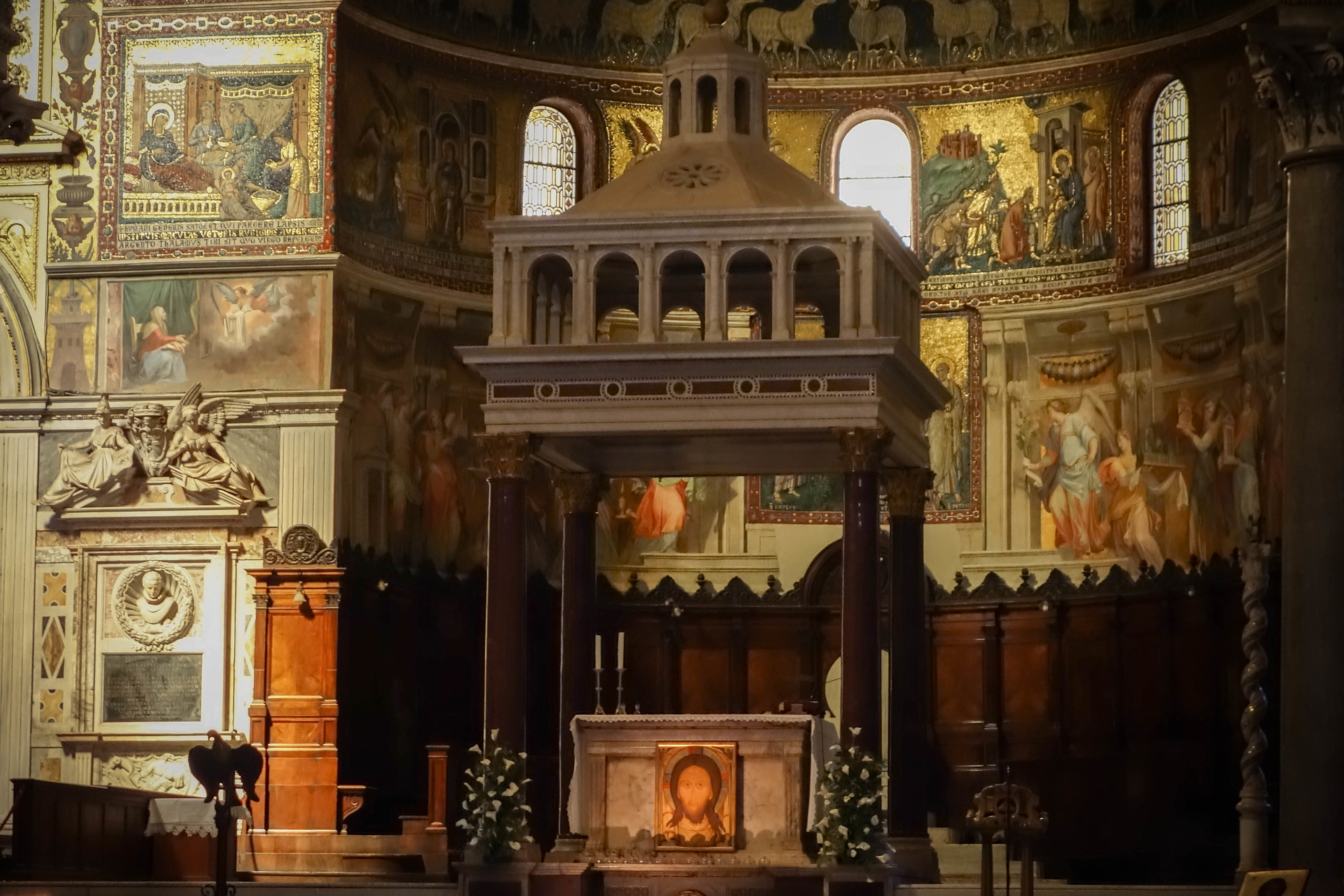The Rapist of Santa Maria in Trastevere
Today at Santa Maria in Trastevere, I saw this bust of a young man above a funeral monument. He’s wearing a tabard, like a knight. Below him was a carved panel with the armor and shield of a Roman soldier. Above him angels sighed on a cornice. The monument is in a prime location just to the left of the high altar in one of Rome’s most beautiful basilicas.
Not bad for the bastard son of a cardinal who was executed for kidnapping and rape.
His name was Roberto Altemps. He was twenty when he died and frankly it’s astonishing that he was punished at all. He died in 1586- a time when the harshest punishment for nobleman-rapist was usually marriage. But Pope Sixtus V decided to make an example of him (though not for the reason one might hope). Sixtus was a member of the Peretti family and Roberto was married to a member of the rival Orsini family. So even though he was caught in the act of raping Ms. Lulla Frangipane, he was tried and convicted of adultery instead.
The Latin epitaph below his bust puts it all rather mildly, noting that he was “extinguished too soon”. The reason he was still allowed such a dignified burial is probably best explained by a photo of his family’s private chapel, located on the other side of his monument.
Today when the sunlight was coming through the window, grazing Roberto Altemp’s monument in the most attractive way, I found that I wasn’t the only tourist taking photographs of him. It struck me how the art in so many churches plasters over history with a new, decorative facade. It all seems beautiful and spiritual because of the context (and much of it is) but in reality the temporal seeps in and good sometimes shares artistic media with evil.
Sources:
A Surprising Pair: The Tombstones of Cardinal Hosius and Cardinal Altemps' Son, Roberto, in the Basilica of Santa Maria in Trastevere in Rome by Grazyna Jurkowlaniec





